Navigating the world of healthy eating can be confusing, especially when terms like “portion” and “serving” are often used interchangeably. A serving size is a standardized amount of food that is used for nutritional guidelines and labeling, while a portion size is the amount of food you choose to eat at any one time. Knowing the difference between these two can significantly impact your eating habits and nutritional intake.

When you look at a Nutrition Facts label, what you see is the serving size; this is a measured amount, like one cup of milk or a single slice of bread. Portion size, on the other hand, is the quantity of food you decide to eat, which can be more or less than a serving size. For instance, if you pour yourself a large bowl of cereal, your portion may actually contain two or three servings.
Understanding these distinctions can help you make healthier choices and avoid overeating. By paying attention to serving sizes on packaging and comparing them to your portions, you can better manage your nutritional intake and overall health.
Key Takeaways
- Serving size refers to a standardized amount of food.
- Portion size is the actual amount of food you choose to eat.
- Managing portion sizes helps avoid overeating and promotes healthier eating habits.
Understanding Portion Sizes

Portion size is the amount of food an individual chooses to eat during a meal or snack. It’s important because it influences daily calorie intake and can affect overall health.
Defining a Portion
A portion size is flexible and can vary greatly from person to person. It differs from a serving size, which is a standard unit of measurement set by nutritional guidelines. For instance, while a single serving size of cooked broccoli is 85 grams, your portion might be more if you enjoy it with a sauce.
This variability can lead to portion distortion, where larger portions become the norm, potentially leading to overeating. It’s essential to be mindful of this distinction to make healthier food choices.
Common Household Measures as Reference
Using common household items can help estimate portion sizes. For example, a cup can be visually compared to the size of a tennis ball. A deck of cards is a handy reference for meat portions, ideally about the size of the palm of the hand.
A small scooped handful is approximately equivalent to a serving of nuts or seeds, while the thumb can measure the right amount of cheese. The tip of the pointer finger often represents a teaspoon, useful for oils or spreads. This approach helps ensure portions are managed properly according to dietary needs.
Visual Comparisons for Portion Estimation
Visual aids make it easier to estimate portion sizes accurately. An average-sized fist is similar to the portion size for fruits like apples or a serving of pasta. A deck of cards helps visualize a proper portion of meat or fish.
Portions of foods like soda or desserts can be kept in check by visualizing smaller containers, like half-cup portions. These visual comparisons can prevent overestimating portions, aiding in better control of food intake and promoting healthier eating habits.
By understanding portion sizes and using visual cues, individuals can avoid common pitfalls related to large portions and make more informed choices about the right amount of food to consume.
Deciphering Serving Sizes
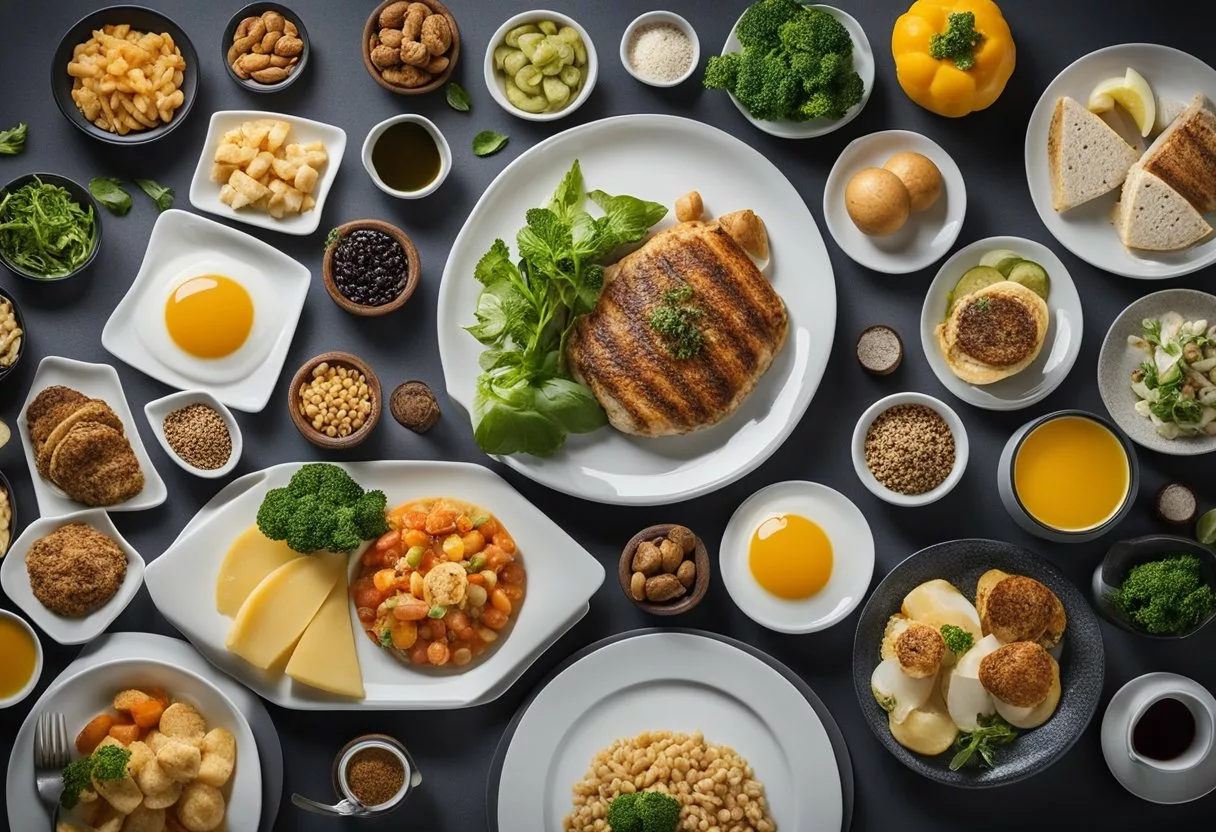
Serving sizes can be confusing. They are important for understanding food labels and managing portion control. Knowing the difference between a serving size and how much you actually eat can make a big difference in your diet.
Serving Size on Nutrition Labels
A serving size is a standardized amount of food, set by the manufacturer and listed on the nutrition facts label. This helps consumers understand how much of each nutrient is in a typical portion. For example, one slice of whole grain bread is considered one serving.
Serving sizes are important for comparing similar products. For instance, one serving of cereal might be one cup, while another brand might list ¾ cup as a serving. These measurements help you understand calorie count, fat, protein, and other nutrients.
Food labels are designed to make healthy eating easier. They show how much of each nutrient is in one serving, helping you make better choices.
Differences in Portion and Labels
A portion size is the amount of food you choose to eat, which can be more or less than the serving size listed on the package. This means your portion might include multiple servings.
For example, if the serving size for pasta is ½ cup but you eat 1 cup, you are consuming two servings. This affects your intake of calories and nutrients. Being aware of this helps you manage your diet more effectively.
It’s easy to eat larger portions without realizing it, especially with foods you enjoy. Understanding serving sizes vs. portions allows you to track what you’re eating and avoid overeating.
Impact on Eating Habits
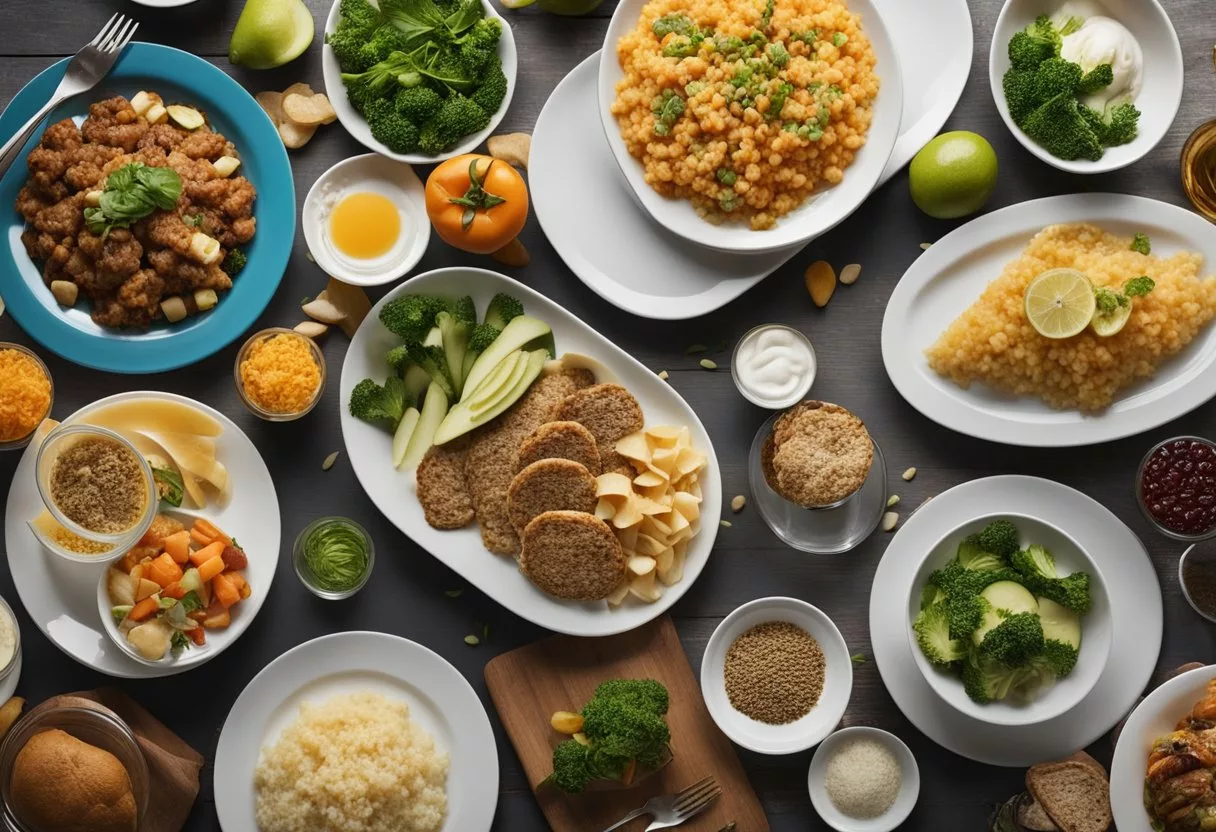
Portions and servings have a significant impact on how we eat, influencing overall dietary habits, weight management, and the likelihood of overeating.
Portion Control and Healthy Eating
Controlling portions can lead to healthier eating habits by ensuring that meals are balanced and nutritious. When people pay attention to portion sizes, they can better manage their intake of calories, fats, and sugars. For example, eating a single slice of whole grain bread rather than multiple slices helps maintain the right balance of nutrients.
Portion control encourages variety in the diet since it allows for more types of food in appropriate amounts. This helps prevent nutritional deficiencies and promotes a well-rounded diet. Using tools like measuring cups or food scales can assist in accurately assessing portion sizes, which is crucial in maintaining a healthy diet.
Portion Size and Overeating
Larger portion sizes often lead to overeating, as people tend to eat the amount of food placed before them. This can result in consuming more calories than needed, even if the food itself is healthy. For instance, a portion of pasta might typically be 1/2 cup cooked, but if served a whole plate, it’s easy to eat twice or thrice that amount.
Overeating due to large portions is a significant factor contributing to obesity. When individuals regularly consume more than their body requires, the excess energy is stored as fat. This makes it harder to maintain a healthy weight. Reducing portion sizes can help control calorie intake and prevent the habit of overeating.
Role of Portion in Weight Management
Proper portion sizes play a crucial role in effective weight management. By eating measured portions, individuals can regulate their calorie intake more effectively. This is essential for both losing weight and maintaining a healthy weight after weight loss. For example, consuming a standard portion size of fruits and vegetables ensures nutrient intake without excessive calories.
Managing portion sizes also helps control hunger and satiety. Eating smaller, frequent meals or snacks can prevent extreme hunger, which often leads to overeating. Paying attention to portion sizes at each meal ensures that calories are consumed mindfully and healthfully, promoting better weight management and overall health.
Guidelines and Recommendations
When it comes to managing portion sizes and servings, understanding the dietary guidelines and using the right tools can help maintain a balanced diet. The following sections explain key guidelines and tools that can aid in precise measurement and control of food intake.
Dietary Guidelines for Portion Sizes
The Dietary Guidelines for Americans provide clear advice on portion control. It suggests consuming items like fruits, vegetables, whole grains, and lean proteins in specific amounts to ensure a balanced diet. For instance, it recommends eating 2-3 ounces of lean meat, equivalent to the size of a deck of cards.
Eating the right portions can prevent overeating, especially with packaged foods where a single portion might contain multiple servings. The guidelines emphasize smaller, more frequent meals to manage hunger and metabolism efficiently.
Standard Measurements like cups and tablespoons help in sticking to these guidelines. For example, one serving of grains might include one slice of bread or half a cup of cooked rice. Keeping portions in check can be managed by using measuring tools and being mindful of the nutrition labels on food packages.
Tools and Guides for Correct Portions
Using measuring cups and spoons can greatly assist in controlling portion sizes. These tools provide precise measurements that align with serving size recommendations found on nutrition labels. Measuring cups come in different capacities, such as 1 cup, 1/2 cup, 1/3 cup, and 1/4 cup, while spoons include measurements like 1 tablespoon or 1 teaspoon.
Visual aids can also be useful. For instance, a portion of cheese might be compared to the size of a domino, and a serving of meat could be similar to a deck of cards. These visual comparisons help people estimate portions without always needing exact measurements.
Online nutrition platforms or apps often feature portion size guides, offering tips on food quantities that make it easier to adhere to dietary recommendations. These guides break down portions and servings into simple, understandable terms, making it easier to eat balanced, nutritious meals.
Food-Specific Portion Standards
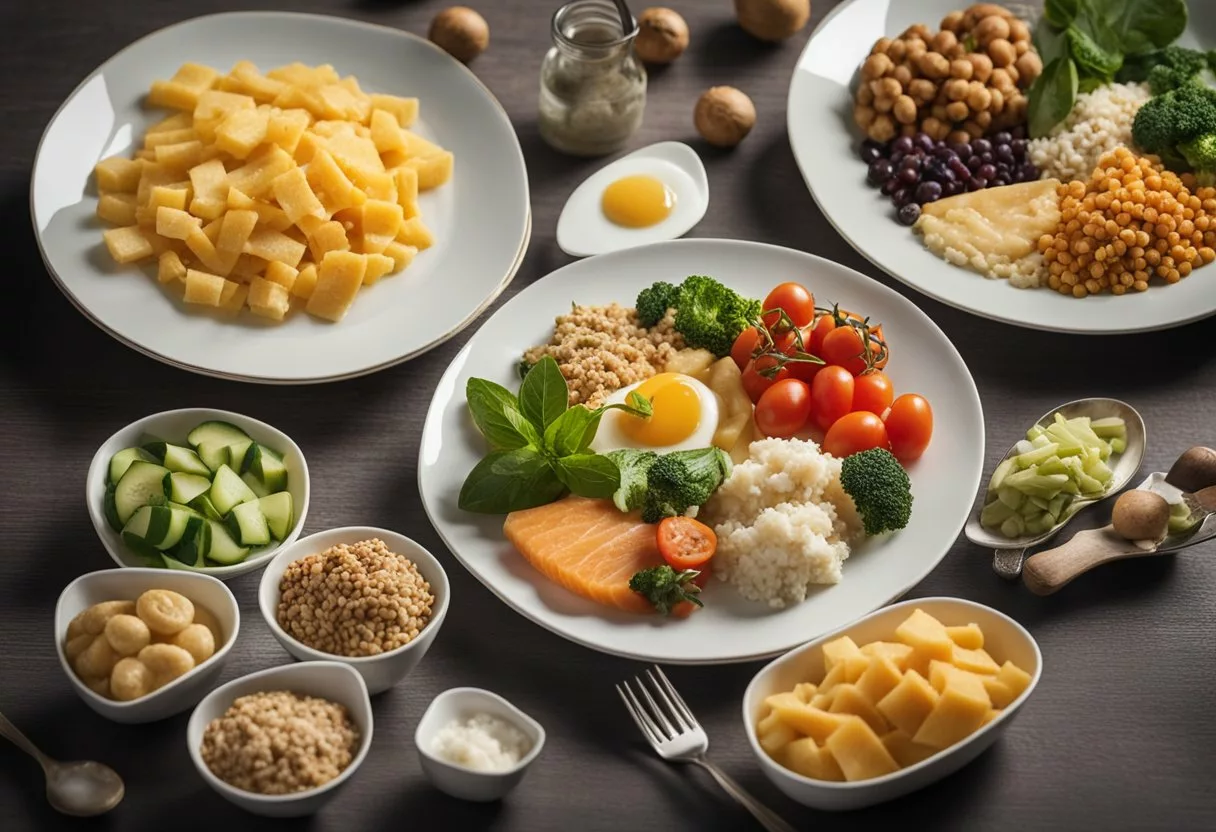
Understanding food-specific portion standards can help guide healthier eating habits. Portions vary depending on the food group, with standardized measurements providing useful benchmarks.
Portions for Proteins
For proteins, including meat, fish, and poultry, an average portion size is about 2-3 ounces, roughly the size of a deck of cards. This applies to lean meats like beef and chicken. The American Heart Association recommends these benchmarks to ensure balanced nutrition without excessive intake.
In terms of cheese, a portion is about 2 ounces, the size of a domino. Fish portions should also be about 3 to 4 ounces, aligning with these standard measures to support dietary balance.
Vegetables and Fruit Recommendations
When it comes to vegetables and fruits, it’s essential to focus on portion sizes that encourage diverse nutrient intake. One serving of vegetables might be one cup of raw, leafy greens or half a cup of cooked vegetables. For fruits, one small piece like an apple or a wedge of melon is typical, with large apples potentially counting as two servings.
A serving of fruit juice is about 8 fluid ounces. Varying the types of vegetables and fruits consumed helps ensure a broad spectrum of vitamins and minerals.
Grains and Dairy Portioning
For grains, a standard portion can range from one slice of whole grain bread to half a cup of cooked rice or pasta. These portions align with typical dietary guidelines and help manage carbohydrate intake effectively. Generally, whole grains are preferred for their higher fiber content.
Dairy portions include one cup of non-fat or low-fat milk, which contains essential nutrients without excess fat. Keeping dairy consumption to these portions, such as an ounce of cheese, helps maintain a balanced diet. The Sanford Fit highlights the importance of portion control to cater to individual nutritional needs while avoiding overeating.
Interpreting Portion Sizes in Different Contexts

Portion sizes vary greatly depending on the context in which food is consumed. Whether eating at home, dining out, or enjoying snacks, understanding portion sizes can help manage intake and maintain a balanced diet.
At-Home Meals vs Dining Out
At home, portions are controlled by the person preparing the meal. It’s easier to measure servings according to dietary guidelines. For example, one serving of pasta is typically 1/2 cup cooked.
In contrast, when dining out, portions are usually larger than standard serving sizes. Restaurants often serve meals with multiple servings of each component. For instance, a pasta dish in a restaurant may contain three or more servings.
To manage portion sizes when dining out, consider splitting a meal or taking leftovers home. This way, you control how much you eat at one sitting and avoid overeating.
Packaged Foods and Takeout Portions
Packaged foods come with Nutrition Facts labels indicating serving sizes. A serving of chips might be 15-20 pieces, but the portion you eat could easily be more.
Takeout portions can be particularly large. A takeout container of fried rice may contain multiple servings but is often consumed in one meal. To better control portions with takeout, divide the food into smaller servings and save some for later.
Understanding these differences can help maintain healthier eating habits and avoid unintentional overeating. Reading labels and being mindful of the actual portion consumed are key strategies.
Adjusting Portions for Snacks and Drinks
Snacks and drinks often come in flexible portion sizes. A serving of nuts might be a small handful, about 1 ounce, but it’s easy to consume much more without realizing it.
Drinks, especially sugary ones like soda or fruit juice, also have standard serving sizes. One serving of soda is typically 8 ounces, yet it’s common to drink much larger portions. For better control, pour drinks into smaller glasses.
When choosing snacks, measuring out servings helps manage intake. Keeping a food diary to track portions can also provide a clearer picture of eating habits and promote healthier choices.
Practical Tools for Measuring Portions

Understanding portion sizes is essential for maintaining a healthy diet. This section will discuss specific tools and techniques to help measure portions accurately.
Using Kitchen Tools
Kitchen tools can be extremely helpful in ensuring that portions are measured correctly. Measuring cups and spoons are essential for measuring dry and liquid ingredients. For instance, using these tools can help you measure the right amount of grains, oils, or fats. A 1/2 cup of cooked pasta or rice can be measured with a standard measuring cup.
Having a food scale is another useful tool. It can measure the exact amount of meat, cheese, or other foods. For example, 2 ounces of cheese is about the size of a domino, but a food scale can provide a precise measurement. Small plates can also be utilized to control serving sizes, making portions appear larger visually even though they are within the recommended serving size.
Estimating Without Measuring
Sometimes you may not have kitchen tools available. In such cases, estimating portion sizes with everyday objects can be useful. A baseball can represent roughly one cup of chopped veggies or fruits. A slice of bread is typically considered one serving of grains. A deck of cards can help estimate a 3-ounce portion of meat, and a thumb can be used to measure about one tablespoon of oils or fats.
Using these visual cues can help maintain portion control even without precise tools. For instance, knowing that a small apple or a wedge of melon is about one serving of fruit can guide better food choices.
Nutritional Considerations Beyond Size
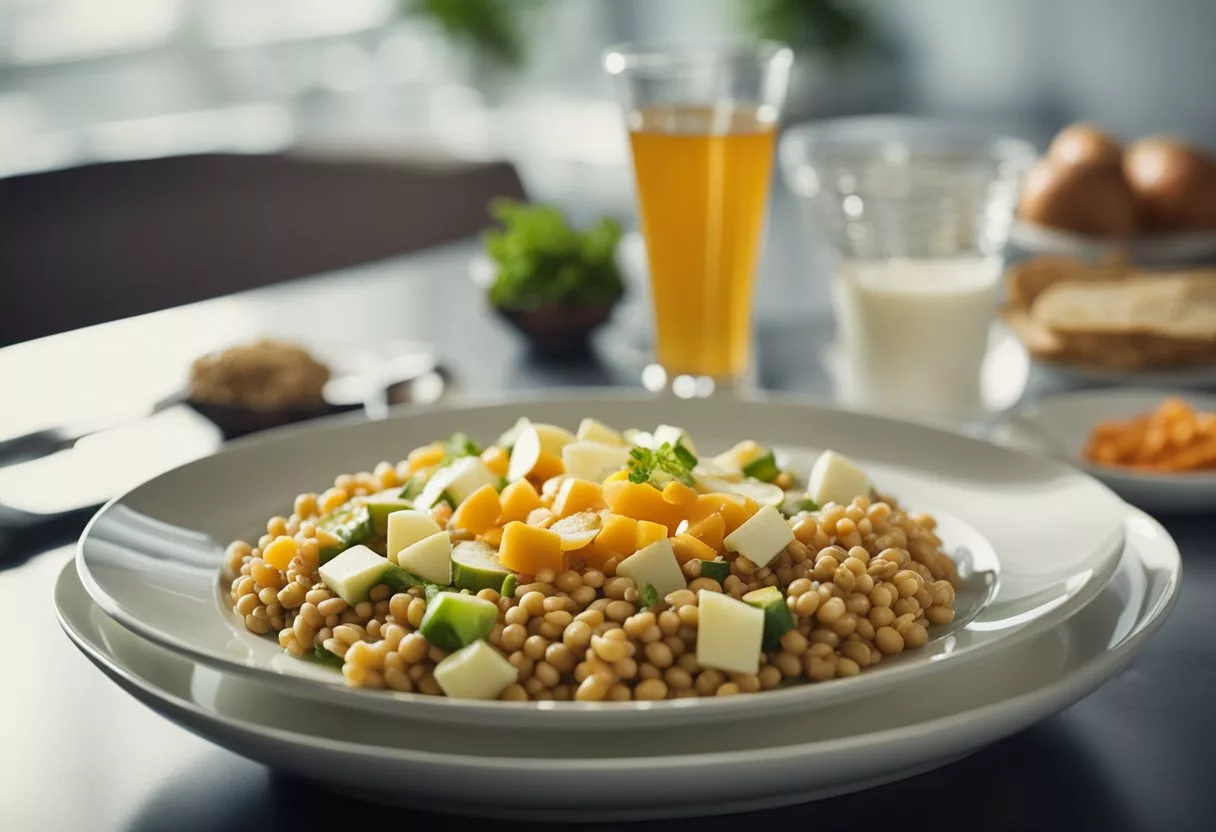
When thinking about portions and servings, it’s important to go beyond just the size to understand their nutritional values. This includes looking at caloric density, nutrient content, and macronutrients like proteins, fats, and carbohydrates.
Caloric Density and Nutrient Content
Caloric density refers to the number of calories in a given weight of food. Foods high in caloric density, like chocolates and fries, pack many calories in small amounts. This isn’t necessarily bad, but it means that overeating such foods can easily lead to calorie surplus.
Nutrients are equally important. For example, a serving of spinach provides vitamins A and K, while a similar portion of white bread offers fewer nutrients. Choosing foods rich in essential nutrients can make a big difference in maintaining balanced health.
Caloric density and nutrients should be considered together to make smart eating choices. Opting for nutrient-rich, low-calorie foods can help achieve better nutritional balance.
Understanding Macros in Portions
Carbohydrates, proteins, and fats, known as macronutrients, play varied roles in maintaining health. Carbohydrates provide quick energy. They are found in foods like bread and pasta, where a typical serving size is about 1/2 cup cooked.
Proteins are essential for muscle repair and growth. Foods like chicken and beans are protein-rich. For example, a serving of chicken is about 3 ounces.
Fats are crucial for brain health and energy. They are present in foods like cheese and avocados. However, fats are calorie-dense, so it’s vital to keep portions moderate.
Balancing these macronutrients in appropriate portion sizes can help maintain energy levels and overall health without consuming excess calories.
Consumer Education and Regulation
Clear information on portions and servings helps consumers make healthier food choices. Understanding regulatory standards and how to read food labels is key.
Food and Drug Administration (FDA) Standards
The Food and Drug Administration (FDA) regulates serving sizes to help consumers understand nutrition information on food labels. These serving sizes are based on the amount of food typically consumed in one sitting.
The FDA sets serving sizes for various food categories by studying eating habits. For example, the serving size for cookies might be two cookies, while for cereal, it might be one cup. These standards ensure consistency across products, making it easier to compare nutrition information among similar items.
Moreover, the FDA requires that the serving size be prominently displayed on the Nutrition Facts label. This transparency helps consumers make informed decisions about their food intake, supporting healthier eating habits.
Interpreting Food Labels and Nutrition Facts
Interpreting Food Labels correctly is crucial for understanding the nutritional content of food. The Nutrition Facts label provides information such as calories, fats, sugars, and vitamins based on one serving size.
Consumers might be confused if they don’t understand the difference between servings and portions. A portion might be double or triple the serving size listed, leading to higher calorie intake. For example, if a serving of pasta is half a cup, eating two cups means consuming four servings.
Consumers also need to be aware of ingredients and sourcing policies listed on food labels. Checking how much of daily nutrient intake a serving fulfills, based on a 2,000-calorie diet, can guide healthier choices. Reliable information from sources like GoodRx Health can offer additional guidance on interpreting food labels.
Lifestyle Integration and Mindful Eating
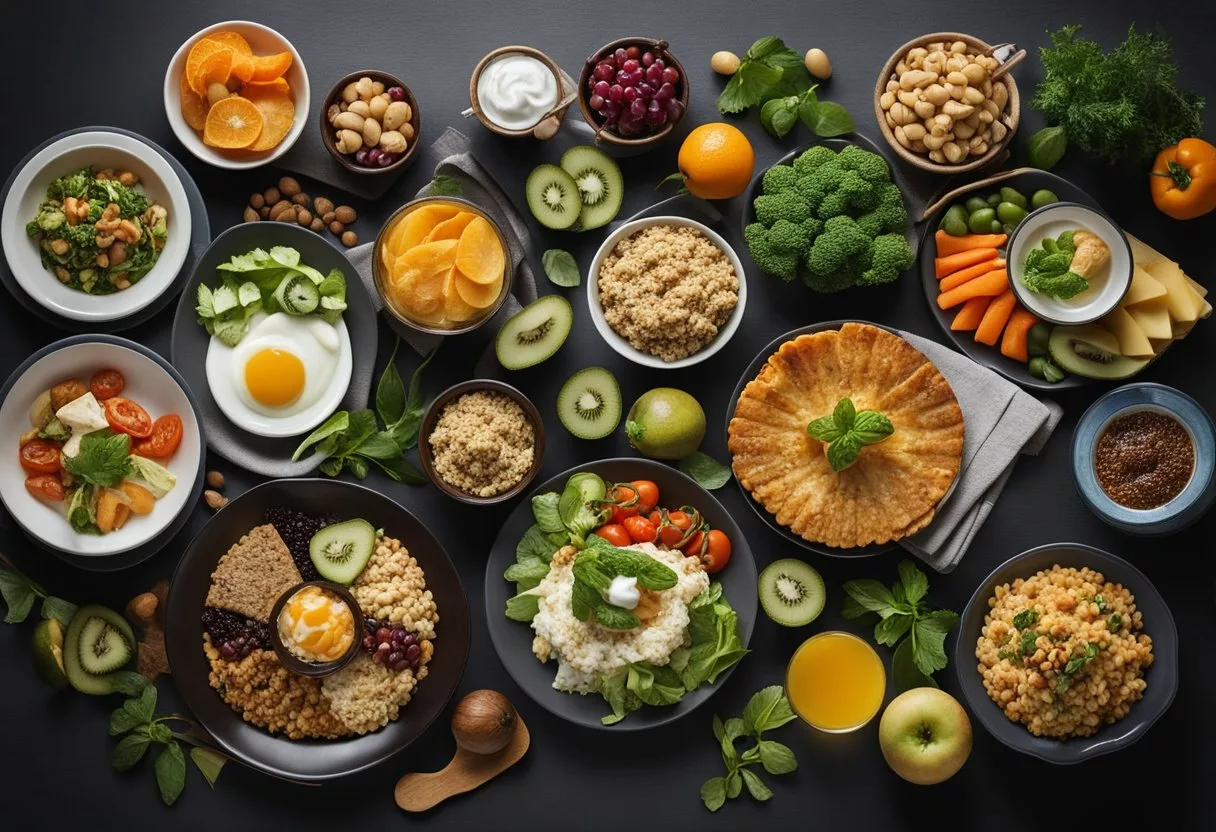
Mindful eating and integrating portion control into daily life can support healthy weight management. Ensuring balanced food choices and proper meal preparation can enhance overall well-being.
Building Habits Around Portion Control
Creating lasting habits around portion control involves first understanding proper serving sizes. Measuring foods accurately can help. A handy tip is using everyday items as visual cues. For instance, a computer mouse can represent a half-cup of vegetables, rice, or pasta.
Planning meals at home can also aid in managing portions effectively. Cooking at home allows control over ingredients and portion sizes, making it easier to stick to healthy eating goals. Pre-plating meals instead of serving from large dishes can prevent overeating. Choosing smaller plates and bowls can trick the brain into feeling satisfied with smaller portions.
Incorporating these habits into daily routines gradually can make portion control a natural part of life. Consistently practicing portion control can contribute to maintaining a healthy weight without feeling deprived.
Mindfulness During Meals and Preparation
Mindfulness during meals starts with paying attention to what and how much is on the plate. Eating slowly is key. This not only aids digestion but also allows the body to signal fullness before overeating occurs. Putting down utensils between bites and savoring each mouthful can enhance this practice.
During meal preparation, being mindful of portion sizes can set the stage for balanced eating. Measuring ingredients and avoiding overly large servings help ensure meals are both satisfying and healthy. Listening to the body’s hunger cues when preparing and consuming meals is crucial.
By combining mindful eating practices with proper portion control, one can achieve a more balanced diet. This approach supports healthier food choices and helps in maintaining a healthy weight. Implementing these strategies can transform eating habits, making healthy eating both enjoyable and sustainable.
Resources for Additional Guidance

For those looking to understand portions and servings better, there are valuable resources available. These include recipe guides, meal plans, and educational content from reputable websites.
Recipes and Meal Plans
The American Heart Association provides detailed guides on portion sizes for various foods. These guides include practical examples such as a slice of whole grain bread or a cup of non-fat milk.
Healthy meal plans can help individuals balance portions and servings effectively. These plans often include servings of fruits, vegetables, and lean proteins, such as 2-3 oz. of lean meat or fish, equivalent to the size of a deck of cards. Such measurements ensure you’re eating balanced meals in correct portions.
Educational Material and Blogs
Websites like NIDDK offer educational material explaining the difference between portions and servings. They highlight how portion sizes can vary based on individual needs, while serving sizes are more standardized.
Blogs such as Sanford Fit provide insights into practical aspects of managing food portions. These platforms also share tips on avoiding over-eating by understanding serving sizes, like using an 8 oz. serving of milk to gauge daily intake.
These educational resources can be valuable for making informed dietary choices and maintaining a healthy lifestyle.
Frequently Asked Questions
Understanding the difference between portions and servings can help individuals make better food choices. The following questions address common concerns and provide specific information on how to manage and interpret portion and serving sizes.
How are portion sizes determined for different foods?
Portion sizes are not standardized and can vary based on individual choices and preferences. For example, one person may eat half a cup of rice, while another might have a full cup. These choices depend on hunger levels, dietary goals, and personal preferences.
What guidelines should adults follow for appropriate portion sizes?
Adults can follow general guidelines like those from the USDA’s MyPlate. For example, half of the plate should consist of fruits and vegetables, a quarter should be grains, and the remaining quarter should be protein. Eating patterns should be balanced and varied to meet nutritional needs.
How can one interpret ‘4 servings’ on food packaging?
When a package indicates “4 servings,” it means that the entire contents are meant to be divided into four equal parts. Each part represents a single serving size as defined on the Nutrition Facts label. This helps with controlling portions and managing calorie intake.
Can you provide some examples of typical serving sizes?
Typical serving sizes can vary, but some examples include:
- 1 slice of whole grain bread
- 1/2 cup cooked pasta
- 1 small apple
- 2 oz. cheese (about the size of a domino) These serving sizes help standardize intake and make portion control easier.
In what ways have portion sizes evolved over the last few decades?
Portion sizes have increased significantly over the past few decades. Fast food and restaurant portions, in particular, have grown, leading to higher calorie consumption. This trend contributes to the rise in obesity and related health issues.
How does the nutrition industry define a serving size?
A serving size is typically defined by standardized measurements, such as those found on Nutrition Facts labels or dietary guidelines. These are set by health organizations and food regulatory agencies to help consumers understand and manage their food intake.